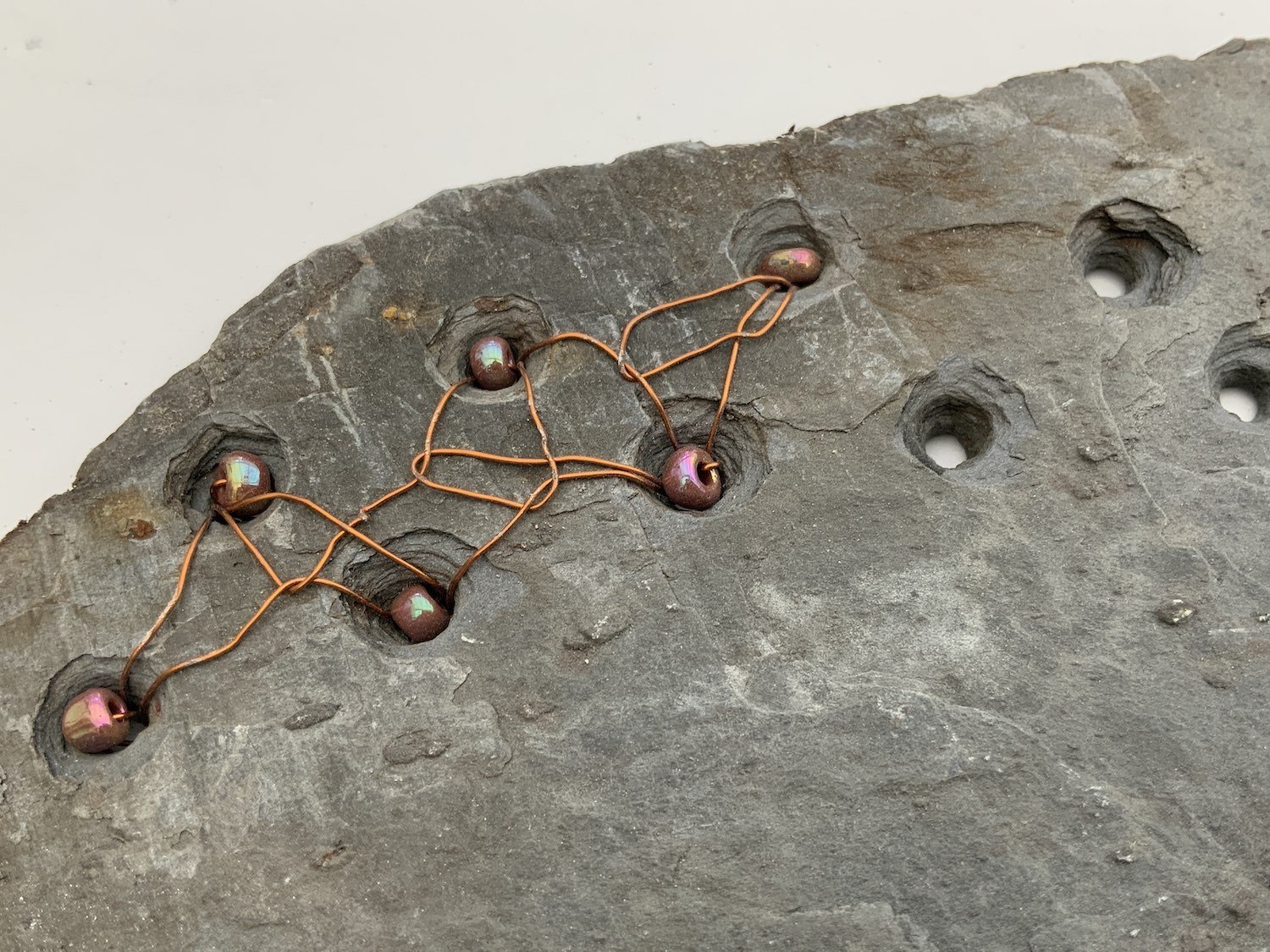Developing ideas for mosaics
Estimated time to read - under 3 minutes
I have recently finished teaching a mosaic course, where we do not make any mosaics for the first two sessions. Instead we take time to plan things out, experiment and play with different ideas.
These early stages of making a mosaic, the ones where you develop your ideas and try things out, are really important. Because a finished piece of work does not appear from nowhere. Time needs to be spent thinking, researching, experimenting and planning before the first tessera gets anywhere near being stuck down.
Some artists create beautiful sketchbooks, brimming with ideas and observations, things to be developed and explored for future artworks. For a long time I wanted to be one of those artists.
I used to buy new sketchbooks with plans to fill them with all my ideas and experiments. I would take them with me when I went walking so I could stop and draw the things that inspired me. But the reality was that most of the time, walking companions don’t want to stop while you sketch. And to be honest, the weather is not always conducive to sitting and sketching.
I have bought lots of different art supplies to experiment with - to try different techniques in my new sketchbooks, but have only got a few pages in before my attention gets diverted elsewhere.
What I have come to realise is that I create different types of sketchbooks. My phone is full of images of tree bark, rocks, and lots of other interesting things that I see when I’m out and about. Documenting what I see this way is more practical for me than sketching outdoors, although the kids still roll their eyes and look at me as if to say ‘do you really need another picture of tree bark?’
My experiments are on offcuts of board, not paper - I play with different colours of adhesive, I experiment with cutting and laying techniques, I punch holes in slate and thread wire and beads through them. These are the processes that inform my work and the dimensionality* of them means they can’t be bound in a sketchbook. But they are an important part of the process nonetheless.
*I may have made that word up!
Don’t get me wrong, I do sometimes sketch and draw things out - ideas that I have and want to develop. It’s good to play on paper too and I am slowly filling the pages of my sketchbooks. My sketches are often very rough. I don’t think they could ever be described as beautiful works of art, but they serve a purpose - they help me figure out how a mosaic design might come together and that’s the main thing!
So I encourage you to embrace the early stages of the creative process in whatever form that takes. It might be taking photos and making a digital album titled ‘inspiration’. Or it might be writing down ideas to develop, letting the words flow and describing the kind of art you want to create.
But hopefully it will also involve experimenting and playing with your materials. Seeing what you can do with them, how you can combine them and what effects you can create. Not only is this fun, but it will generate further ideas and improve your art!
You can stick down small samples, or use a temporary surface like clay for your experiments, but however you choose to play, keep a note of what you like and what you don’t.
These experiments will form your own kind of sketchbooks - a record to refer back to when you are looking for ideas or trying to figure out what to do next.
And once you have your ideas more clearly formed, then you can get right on with making your mosaic!
This blog post was adapted from one of my weekly emails. If you have enjoyed reading it and would like to receive similar posts direct to your inbox, you can subscribe to my mailing list using the form at the bottom of the page.


